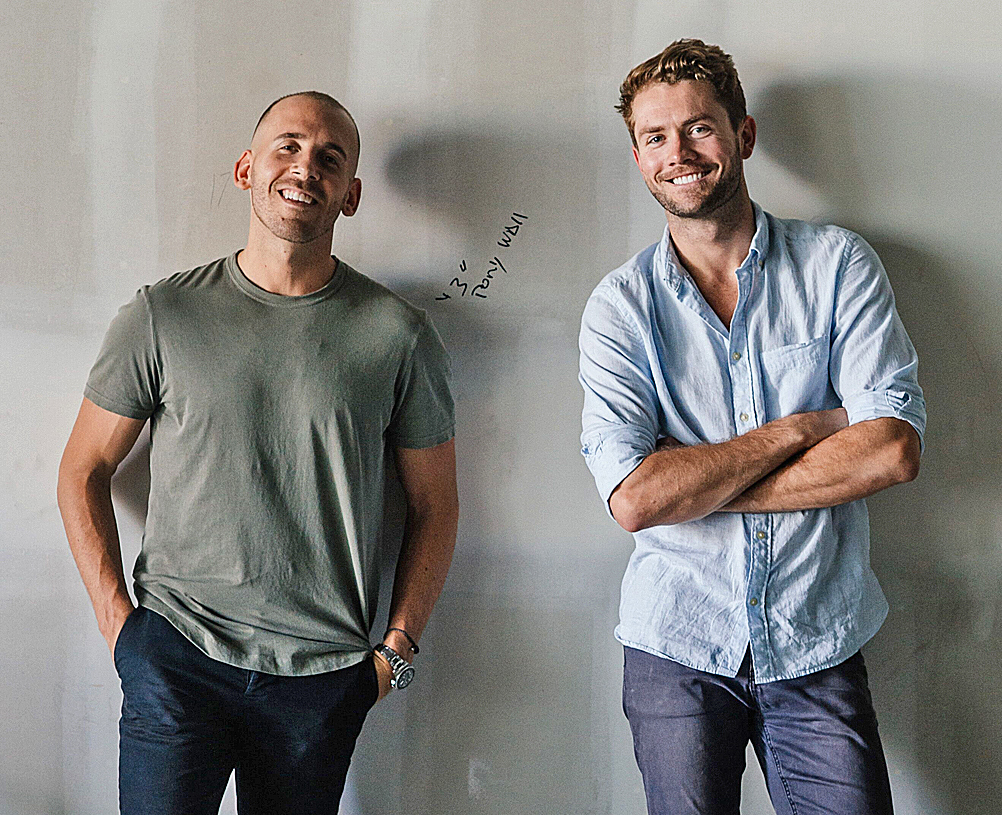
Remedy Place founder
Dr Jonathan Leary (left) and COO Rhyce Lein
The offering
Stepping off of the busy Sunset Boulevard into 4,500sq ft Remedy Place, you immediately feel your blood pressure go down. The earthy tones, natural finishes, soft lighting, and cozy furnishings make you feel right at home. Remedy Place, a self-named ‘social wellness club’, is the ideal name for this collection of options based on seven pillars of holistic health – heat, cold, oxygen, nutrients, movement, mind and compression – to address whatever ails you. Elements include hyperbaric chambers, infrared sauna, cryotherapy, compression therapy, IV nutrient drips, ice baths, meditation and mindfulness classes and chiropractic services. Each is situated to afford maximum privacy and can be utilised alone or with others. Acupuncture cupping and consults with a naturopath are also available.
Beyond the therapies, an important component of this self-named ‘social wellness club’ is connection – albeit respecting new social distancing rules. Founder Dr Jonathan Leary says: “It’s a place to socialise which is both temptation and toxin-free... by providing healthy substitutions for occasions like happy hour, Sunday brunch or a girls’ night out.”
The beautifully designed lounge and bar offers a convenient space to work or meet friends, while enjoying locally-sourced food and drink. Adjacent is a large room suitable for group activities, such as sound healing, which is also equipped with a projector for meetings. So in all, this new type of ‘third place’ is one that enables you to visit alone or with friends, to enjoy a health-boosting treatment, have some quiet time, perhaps do a little work and sip a kombucha and nibble a healthy snack.
Business model
Remedy Place opened in December 2019 and offers a la carte treatments as well as a membership – and it only needs 200 members to break-even. COO Rhyce Lein says they were initially surprised by the amount of business (70 per cent) coming from the a la carte side, but he expects that to even out with membership in the next few months. He adds: “With our opening right before the holiday season, we had no time to launch marketing campaigns and partnerships, it was all just word-of-mouth and press.”
Payroll is well under 20 per cent. That’s a very compelling number
The most popular therapy so far has been the hyperbaric chambers, where air pressure is three times higher than normal, meaning the lungs gather more oxygen to carry through the body. Lein believes these sessions are popular because they’re unique, and consumers have a recognition of their benefits which include strengthening the immune system, speeding up the healing process and encouraging the formation of new collagen and skin cells. A 60-minute session costs US$160 (€135, £122) and clients can bring their laptop or even take calls, or listen to guided meditation if they want to relax.
IV drips offer ‘antidotes’ such as Morning After and Post-Workout, take up to 30 minutes and are priced from US$180 (€152, £137) to US$220 (€186, £168). A la carte prices start at US$45 (€38, £34) for a 10-minute cryotherapy. Monthly membership includes unlimited cryotherapy and classes, an IV drip, hyperbaric session, infrared sauna experience, ice bath class and lymphatic drainage massage, along with additional discounts for US$495 (€419, £378). Membership is month-to-month with no initiation or cancellation fees.
Despite opening just a short time before COVID hit, Remedy Place was still set to break even in its third month. Lein puts this down to the business model which allowed it to open 12 hours a day, seven days a week, with only a staff of nine people. Further, as a result of the pandemic, it’s discovered it can do the same amount of revenue in 8 hours. The initial investment for equipment and buildout, at about US$1.7m (€1.4m, £1.3m), was funded by celebrity clients of Dr Leary, but the operating expenses are modest; Lein states that, apart from founders, payroll is well under 20 per cent. That’s a very compelling number!
